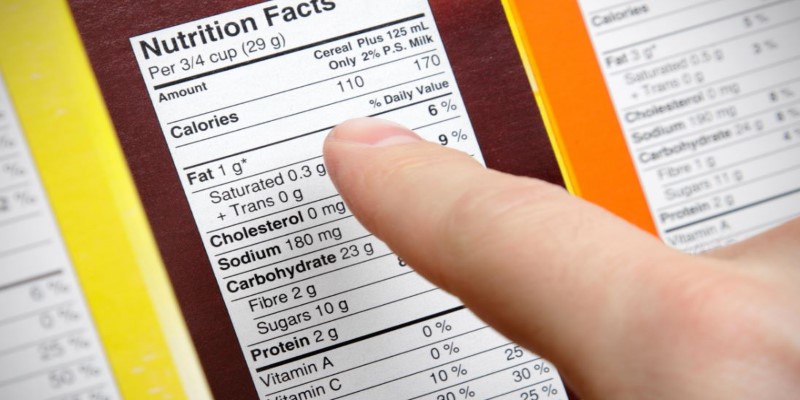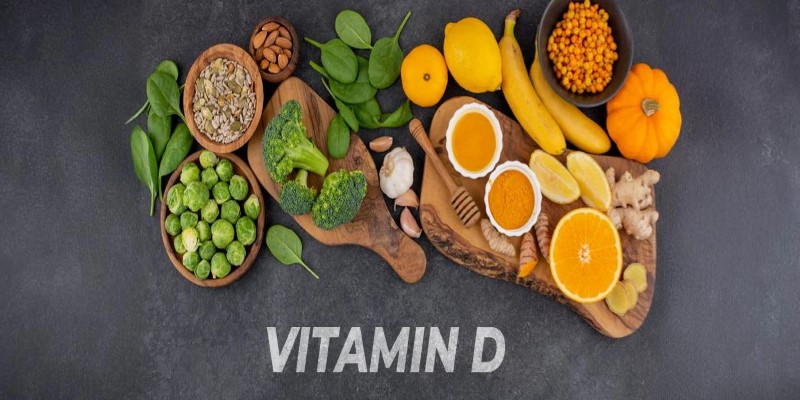
The likely reason you ended up on this article is that you have realized the importance of calorie counting or maintaining an adequate nutritional value in your life and now want to learn how to read nutrition labels to make informed food choices.
Regardless of the case, we are here to help. The article below provides a comprehensive guide on how to read a nutritional label like a pro, along with all the right information on what to consume and what to avoid. Hop on below to start making healthier choices.
Where to Find the Label and What It Includes
Food labels are typically located on the back or side of a pre-packaged food container’s packaging. These labels contain all the necessary information about the product, including its legal name, ingredient list, nutritional information breakdown, allergen warnings (if applicable), and an expiration date.
While most nutritional labels are commonly found on the back or side of the packaging, there are times when the product might also contain its label at the top, bottom, or even on the product itself, with proper nutrition facts clearly explained. However, whichever side the label is imprinted on, it would typically contain all this important information:
- Product Information: It includes the brand name, product name, and a basic description of the product.
- Ingredient List: This section provides a detailed list of all ingredients used in the production of the packaged food, allowing consumers to identify and avoid any ingredients to which they are allergic.
- Allergen Information: In addition to the ingredient list to ensure your safety, companies also include specific warnings for common allergens, such as dairy, soy, or nuts, if they are used in the product.
- Nutritional Information: The nutritional information section provides details on the amount of energy in kilojoules and calories, as well as information on fat, saturated fat, sugar, carbohydrates, protein, and sodium.
- Important Dates, Weight, and Measures: The nutritional label will also include the expiration date for the product, ensuring consumer safety. Information on the product’s weight and volume will also be provided here.
- Barcode and Batch Number: This section is used for tracking and identifying the product.
Key Sections to Understand the Nutrition Label Guide
Now that you know where to find a nutritional label and what it includes, understanding nutrition facts mentioned on the label and how you can read them is the next step. While a nutritional label may initially appear to be a jumble of words and numbers that can be overwhelming, in reality, understanding and reading it is quite simple. Here is what to look for on a nutrition label:
§ Calories
The calories are usually labeled under the ‘Amount per serving’ section on a nutritional label and provide information on how many calories are in one serving of the food. The calories are usually calculated based on three macronutrients – fat, protein, and carbohydrates- and many companies use the 4-9-4 system developed by Wilbur Atwater for this purpose.
According to Wilber’s calorie label reading tips, proteins and carbohydrates have four calories per gram, while fat holds around nine calories per gram. So, suppose a product has 8 grams of fat, 37 grams of carbohydrates, and 3 grams of protein, according to this formula, we calculate calories as follows: 8 x 9 = 72 fat calories, 37 x 4 = 148 carbohydrate calories, and 3 x 4 = 12 protein calories. All this would then add up to 232 calories in the product.
§ Serving Size
The serving size is usually found under the ‘Nutritional Facts’ title and contains a simple measurement scale like cups or pieces along with an equivalent for it in grams and ounces. Understanding serving sizes on food labels is not hard, and the information is written in simple terms. For example, a serving size may be listed in cups, with its equivalent in grams displayed next to it. This helps consumers maintain an easy comparison between similar products.
· Macronutrients and Micronutrients

The nutritional label contains the total gram of macronutrients per serving present in the product. The macronutrients as mentioned above are:
- Fats – total fats along with specific fats like saturated and trans fats.
- Carbohydrates – total carbohydrates, total sugars, and dietary fiber.
- Proteins – all essential protein components included in the making.
Apart from macronutrients, micronutrients also play an essential part in food products. While required in small quantities, these are essential for maintaining overall health. The important micronutrients usually include:
- Vitamins – commonly include Vitamin A, C, D, E, and the B vitamins, such as B6 and B12.
- Minerals – essential minerals commonly found in food products include iron, potassium, calcium, and magnesium.
· Percent Daily Value
This part of the nutritional label helps consumers understand how many nutrients per serving of the food contribute to their daily diet but in a different way than the gram amount presented next to the nutrients. The percent daily value can help consumers understand whether the food product has low or high amounts of certain nutrients.
This will help consumers maintain a balanced diet by consuming foods low in added sugars and fats and eating foods high in fiber, vitamins, minerals, and other essential nutrients.
Reading Food Labels Ingredients List – What to Look for and Avoid
Reading ingredient lists and having a clear understanding of what to consume and what to avoid is very important. The general rule of thumb for the ingredient list is that the first three ingredients mentioned indicate the food’s primary composition, and hence, focusing on them is essential. Moreover, avoiding excessive sugars, which may be found under different names, is also important. Here is more on what you should look for and what you should avoid:
What to Look For:
Look out for these essential ingredients:
· Fiber
It is essential to pick foods that offer at least 3 grams of fiber per serving. Moreover, consuming foods naturally high in fiber, such as legumes, whole wheat, and vegetables, is important.
· Vitamins and Minerals
Choosing foods that contain essential vitamins and minerals, such as Vitamin D, iron, calcium, and potassium, is advisable.
· Natural vs. Added Sugars
Ensure you consume foods that contain natural sugar and avoid hidden sugars in nutrition facts, often disguised under names like agave nectar or high-fructose corn syrup.
What to Avoid?
It is recommended to avoid added sugar, saturated and trans fat and keep your levels of sodium serving low.
Common Marketing Tricks on Packaging
There are times when the words and descriptions on food packaging can be so enticing that they may convince you to purchase the product. However, don’t fall for this trap. Health claims on many packaged foods are designed to catch your attention and convince you that they are healthy. Here are some common claims which you should avoid:
- Light – products that are light are usually processed to reduce either calories or fat. Many are watered down, too. Hence, always check to see if anything has been added to its replacement, like sugar.
- Natural – It doesn’t necessarily mean that the product is completely natural. This aspect simply indicated that, at one point, the manufacturer used a natural source or ingredient in the production.
- Low Calorie – it is not necessary for brands to have lower calories compared to their original products. In fact, one brand’s low-calorie product might have the same number of calories as another brand’s original product.
- No Added Sugar – some products have a high natural sugar content. So, even if they don’t have added sugar, it doesn’t necessarily mean it is healthy.
- Low Fat and Carbs – low fat usually means that extra sugar has been added at the cost of cutting down fat. Therefore, ensure that you check the ingredient list properly. On the other hand, low-carb diets often involve processed junk foods, so be sure to check them out carefully.
Tips to Use Nutrition Labels to Your Advantage

Here are some essential tips for interpreting nutrition information so that you can use the nutritional labels to the best of your benefits and make healthier food choices:
Start with Serving Size
The serving size on the food label breakdown plays a major role in your food picks. Start by comparing your actual portion to the listed serving size. This will help you calculate the calories and nutrients that you are consuming.
Limit Sodium, Added Sugars, Saturated and Trans Fat
Now that you have learned how to check sugar and fat on labels ensure to use them to your best benefit. This is because all these food components are linked to chronic diseases like cardiovascular conditions, diabetes, and high blood pressure.
Compare Similar Products
Similar products from different brands can vary considerably in their nutritional value. Hence, checking and comparing different labels to select options that meet your dietary needs is important.
Conclusion
If you are someone who is trying to control or maintain your daily calorie intake and watch what you are consuming, then learning how to read food labels for healthy eating has got to be your first priority. We hope this article was sufficient to help you and guide you on the right ways to read food labels.



